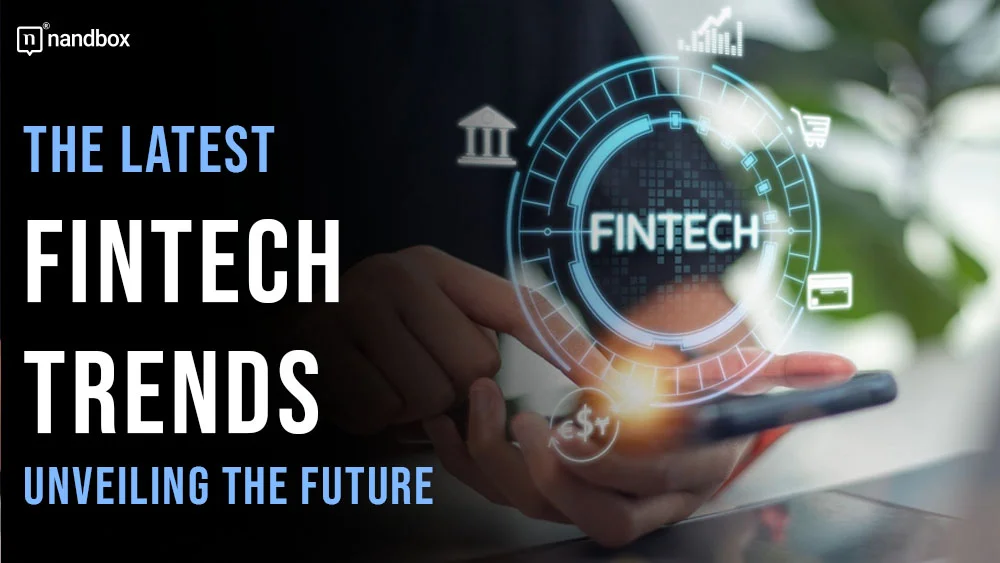Remember the good old days, when you would have to wait in your bank’s endless queues to deposit or withdraw any amount of cash? So, you would find yourself standing for more than three hours at either an ATM or in the bank to deposit or withdraw a very small amount. Luckily, they are way behind us. The merger of the financial sector with technology provided us with many advanced solutions that were kind of considered science fiction before. I mean, waving your phone over a machine to pay for something? 5–10 years ago, this would have sounded pretty unreal. In this article, we will explore the great merger of fintech and how it has impacted our lives. We will also get to demonstrate the future trends in the vast market of fintech and what we should expect next.
An Introduction to Fintech
It was only a matter of time before the financial sector witnessed an enormous transformation that wouldn’t only improve clients’ experiences but also majorly impact all internal operations. Well, it was somewhat of a no-escape situation where everything had to be digitalized to be able to serve people all around the world during the pandemic. The pandemic forced many sectors to adapt to the ongoing situation to avoid major consequences. Among these sectors that faced many consequences from the lockdown was the financial sector. The fact that all physical banks and headquarters were out of order was a big deal. As a result, all transactions and financial operations stopped, and major financial losses occurred. This had global repercussions in addition to its effects on individuals.
Luckily, the financial sector was able to address this problem quickly by incorporating emerging technologies that already existed but didn’t gain much recognition or novel ones that we had never known before. This concept as a whole is known as Fintech.
Fintech is the major movement merging financial services with software solutions. It is the process of digitalizing all financial services and offering them through digital means. This includes transferring and receiving money, checking statements, investing, and so on.
The merger is not exclusive to the banking industry or the financial products and services it provides. It also includes all financial institutions and a wide variety of services to ensure inclusivity. Fintech is also transforming credit card marketing strategies, helping financial institutions create personalized offers and rewards programs using data-driven insights.
Are Applications a Part of Fintech?
Well, since fintech includes offering services through digital means, does this include applications? Absolutely! Applications are a major part of fintech. They are considered the best medium through which financial institutions can provide services, and this is due to many reasons. One of the reasons would be the accessibility and availability of applications. Nearly 70% of the world’s population has smartphones and uses applications. This makes it easier for everyone to access their finances anywhere and anytime they want. Along with applications, two other elements shape fintech. These are APIs and Web platforms.
APIs, or Application Programming Interfaces, are the gates that help two applications or pieces of software communicate and exchange data. In fintech, APIs play a crucial role by bridging the gap between the financial app’s software and the financial institution’s backend. Establishing this connection is essential because it paves the way for the transfer of information between the different systems of the institutions and the financial software.
Web platforms, on the other hand, are alternatives to applications. Well, in a way, they are the earliest forms of fintech that existed way before applications. Web platforms serve the same purpose that applications do, namely, making it easier to provide financial services to customers in different parts of the world. So, we can say that web platforms are the best alternatives to applications in the fintech realm.
Diving Deep Into The Top Technologies Used in The Fintech Realm
There are many technologies incorporated into fintech. And many more are yet to come with new fintech trends. These technologies are what help the financial sector progress and offer vast services and products to everyone. Without further ado, let us explore the top three technologies used in the fintech realm.
1. Blockchain

It is no surprise that blockchain is on the top list of technologies used in fintech. It also helps the new fintech trends significantly. Actually, it is the main technology in the whole sector now. Blockchain is a technology where all databases are decentralized, which makes them secure and safe to the maximum level. Due to its exceptional security, blockchain has been the top choice for all fintech solutions when it comes to string data and transactions.
2. Cloud Computing
Cloud computing is also another form of storing data safely and conveniently. The financial sector is based on millions of pieces of sensitive data and clients’ information that need to be protected at all costs. And this made cloud computing an invaluable tool and technology for the financial sector and fintech. Cloud computing offers many storage options for businesses and institutions, each tailored for specific environments. It also helps them scale their operations and businesses to be able to serve clients better.
3. Internet of Things
The last technology is the Internet of Things. We owe the Internet of Things a lot and so does the financial sector. The Internet of Things offers exceptional connectivity that allows devices to communicate and exchange information at real-time speed. This helped many solutions emerge, such as cashless payments.
Importance of Fintech
Enhanced Efficiency
Fintech solutions simplify and digitize traditional financial procedures, making it possible to complete a wider range of transactions in less time. Both companies and customers benefit from the increased productivity that results from this.
Financial Inclusion
There is hope that fintech will help underprivileged and unbanked communities gain access to banking services. Innovations and solutions like mobile banking and digital wallets have opened up the financial system to those who have never had access to it before, which ensures inclusion in the finance sector.
Innovation in Payments
Money transfers have been greatly improved by fintech. Paying is now easier, safer, and more convenient than ever thanks to innovations like mobile payment apps, P2P transfers, and digital and cryptocurrencies.
Access to Capital
Increased accessibility to capital for individuals and small businesses is a direct result of fintech’s embrace of crowdfunding and P2P lending. Those who may have trouble getting loans through standard banking channels would benefit greatly from this.
Data Analytics and Personalization
Challenges of Fintech
While fintech offers numerous benefits and opportunities, it also faces several challenges that can impact its growth and development. Partnering with an experienced Financial software development company can help navigate these hurdles effectively. Here are some key challenges associated with the fintech industry:
Regulatory Compliance
Financial technology firms frequently face strict government regulation. Financial compliance requirements and standards can be time-consuming and expensive to implement and maintain. Global fintech firms have an enormous challenge when trying to comply with the varying regulatory requirements of different jurisdictions.
Cybersecurity Risks
Fintech is increasingly vulnerable to cyberattacks because it relies on digital technologies. Protecting private financial information and verifying the legitimacy of transactions depends critically on keeping up a high level of cybersecurity. Constant monitoring and investments in security infrastructure are necessary due to the ever-changing nature of cyber threats.
Technology Risks
Fintech companies may find it difficult to keep their systems updated and integrate new technologies without impacting business operations due to the quick speed of technological improvements. When it comes to the constantly shifting fintech industry, there are risks associated with using outdated technologies and the need for constant investment in new ideas.
Customer Trust and Adoption
The success of fintech companies depends on earning and keeping their customers’ trust. In the financial sector, it can be particularly difficult to persuade customers to adopt innovative technologies. There need to be improvements in areas like security, dependability, and accessibility before mass adoption can happen.
A Journey Into Fintech’s Latest Trends
Biometric Payments
The fintech realm is always after security and solutions that offer the maximum level of safety for clients. This is what gave biometric payments a chance to shine and be among the top and most anticipated fintech trends in 2023. Biometric payments are not your regular payments that you make using a standard password. These types of payments call for transaction validation using fingerprint scans, facial recognition, voice recognition, retina scans, and so on. This enables safe transitions that can’t be compromised or violated.
Neobanks
Neobanks are the next shining star in fintech trends. These are a type of bank that only exists digitally, as they don’t have physical locations, yet they operate just like an actual bank. This might seem kind of odd, as we only know of banks that exist digitally but also exist physically. Through neobanks, you will do whatever you need to do with your finances. Without any effort, you can do things like open an account, issue a card, and much more.
Embedded Finance
The last emerging trend in fintech is embedded finance. Embedded finance is so old news, as it actually exists and we use it frequently. But what is new with embedded finance is the broad usage and progress that we all expect. Embedded finance is the presence and offering of financial services through non-financial mediums or platforms. For instance, it is paying for an Amazon order through Amazon’s application or also branded cards that you get and exclusively pay with for the brand only. Although embedded finance already exists, it is making a comeback with many advanced additions that offer more convenience and ease.
In Summary
The opportunities and benefits of fintech, a rapidly developing industry, are practically limitless. This will be achieved with the progression of the used technologies like blockchain and the Internet of Things and by including more technologies like embedded finance and biometric payments.
Overall, our exploration of the latest advances and trends in fintech demonstrates the industry’s dedication to progress. Businesses in the financial technology sector that make use of these innovations are not only reshaping the concept of conventional banking but are also laying the foundation for a more democratized, efficient, and flexible financial system. As we explore the future of fintech, the merging of these trends promises to revolutionize the way people make transactions, invest, and interact with financial services. Adopting these developments is not merely an option but rather a strategic necessity for individuals or organizations seeking to thrive in the ever-changing realm of fintech.





